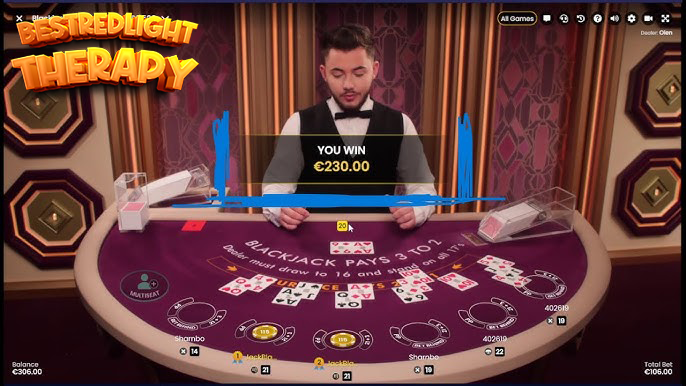
What Is the Basics of Playing Baccarat Gaming?
Baccarat is one of the most popular and elegant games found in both traditional and online casinos. Often associated with high-rollers and luxury, baccarat has earned its place as a staple of casino culture. Despite its upscale image, baccarat is surprisingly simple to learn and play. Whether you’re a novice stepping into a casino for the first time or an online gamer looking to try something new, this guide will cover the essential basics of playing baccarat.

The Origins and Appeal of Baccarat
Baccarat originated in Italy during the 15th century before gaining popularity in France. Over time, it spread across Europe and later to the United States and Asia, where it found a particularly enthusiastic following. What draws many players to baccarat is its low house edge, minimal skill requirement, and fast-paced gameplay.
There are several variations of baccarat, including Punto Banco, Chemin de Fer, and Baccarat Banque, but the most commonly played version—especially online—is Punto Banco. This is the version we’ll focus on in this article.
The Objective of Baccarat
At its core, baccarat is a comparing card game between two hands: the Player and the Banker. You do not play against other players or even the dealer. Instead, your main goal is to bet on the outcome of the game. There are three possible outcomes:
-
Player wins
-
Banker wins
-
Tie
You place your bet before any cards are dealt. Then, two cards are dealt to both the Player and the Banker hands. The hand closest to a total of nine wins.
Card Values and Scoring in Baccarat
Understanding how cards are valued is key to grasping how the game is played.
-
Cards 2 through 9 are worth their face value.
-
10s, Jacks, Queens, and Kings are worth 0 points.
-
Aces are worth 1 point.
The total hand value is calculated by adding the values of the two cards. However, only the last digit of the total counts. For example:
-
A hand with a 7 and 8 equals 15, but in baccarat, it scores 5.
-
A hand with a 9 and 6 equals 15, which scores 5.
-
A hand with a 3 and 6 equals 9, which is a natural and a winning hand unless the other hand also has a 9.
The maximum score a hand can have is 9, and that’s what players aim for.
Natural Win and Drawing Rules
-
If the Player or the Banker has a total of 8 or 9 from the initial deal, it is called a natural, and no more cards are drawn.
-
If neither hand has a natural, drawing rules are applied to determine if a third card is dealt.
Player’s Drawing Rule:
-
If the Player’s hand is 0–5, a third card is drawn.
-
If the Player’s hand is 6 or 7, it stands.
Banker’s Drawing Rule:
The Banker’s drawing decision is a bit more complex and depends on both the Banker’s total and the Player’s third card (if any). Here’s a simplified version:
-
If Banker has 0–2: always draws.
-
If Banker has 3: draws unless Player’s third card is an 8.
-
If Banker has 4: draws if Player’s third card is 2–7.
-
If Banker has 5: draws if Player’s third card is 4–7.
-
If Banker has 6: draws if Player’s third card is 6–7.
-
If Banker has 7: stands.
These rules are automatically applied in most games, especially online, so you don’t have to memorize them, but it helps to understand how the process works.
Types of Bets in Baccarat
There are three main bets you can place:
-
Player Bet
-
Pays 1:1
-
House edge: around 1.24%
-
-
Banker Bet
-
Pays 1:1, but typically a 5% commission is taken
-
House edge: around 1.06%
-
Despite the commission, this is statistically the best bet in the game.
-
-
Tie Bet
-
Pays 8:1 or 9:1 depending on the casino
-
House edge: around 14.36% (for 8:1 payout)
-
It may look attractive, but it’s highly risky.
-
Some casinos also offer side bets like “Player Pair,” “Banker Pair,” and “Perfect Pair,” which offer larger payouts but come with significantly higher house edges.
Playing a Round of Baccarat
Let’s walk through a typical round of baccarat to see how it flows:
-
Place Your Bet
Choose whether to bet on Player, Banker, or Tie. In live or online games, you’ll use chips to make your selection. -
Cards Are Dealt
Two cards are dealt face-up to the Player and Banker hands. -
Natural Check
If either hand totals 8 or 9, the round ends and the hand closest to 9 wins. -
Third Card Rule Applied
If no natural, third cards may be dealt according to the drawing rules. -
Winning Hand Determined
The hand closest to 9 wins. Winning bets are paid accordingly.
Baccarat Strategies and Tips
Though baccarat is mostly a game of chance, there are a few strategies and tips that can help improve your overall experience:
-
Bet on Banker
The Banker bet has the lowest house edge, even after the commission. -
Avoid Tie Bets
The potential payout is high, but the odds of a tie are low. -
Money Management
Set a budget and stick to it. Don’t chase losses, and know when to walk away. -
Pattern Tracking (Optional)
Some players track outcomes to look for patterns (like streaks of Banker or Player wins). While fun, this doesn’t affect actual odds since each round is independent. -
Practice Online for Free
Many online casinos offer free baccarat games. These are a great way to practice without risking real money.
Conclusion
Baccarat is a game of elegance, simplicity, and luck. Its straightforward gameplay and low house edge make it appealing to both beginners and seasoned gamblers. Whether you’re playing in a glamorous casino in Monaco or trying out an online version on your phone, understanding the basics—such as hand values, betting options, and drawing rules—will enhance your enjoyment and confidence at the table.
So place your bets, enjoy the thrill, and may the cards bring you a natural nine!


